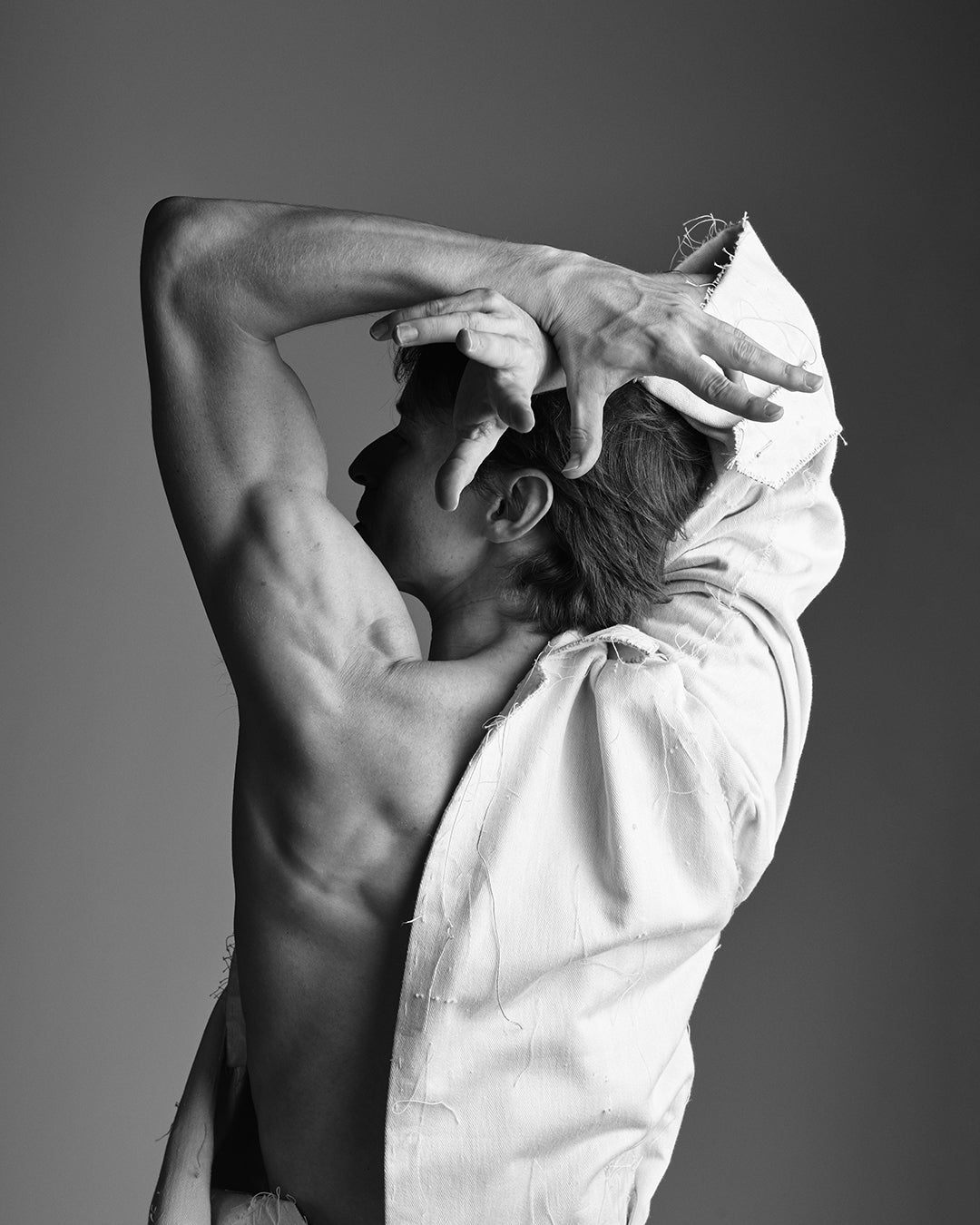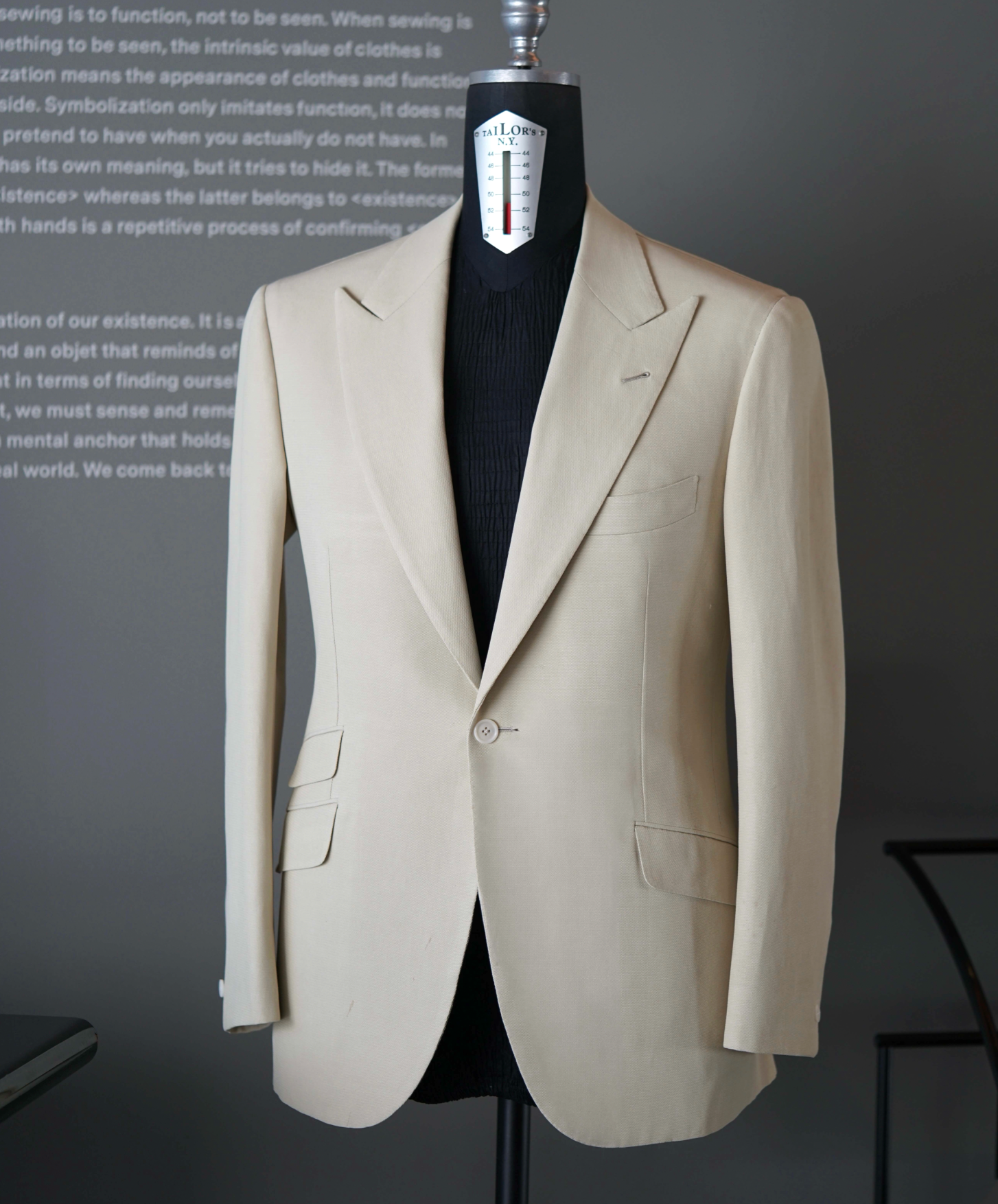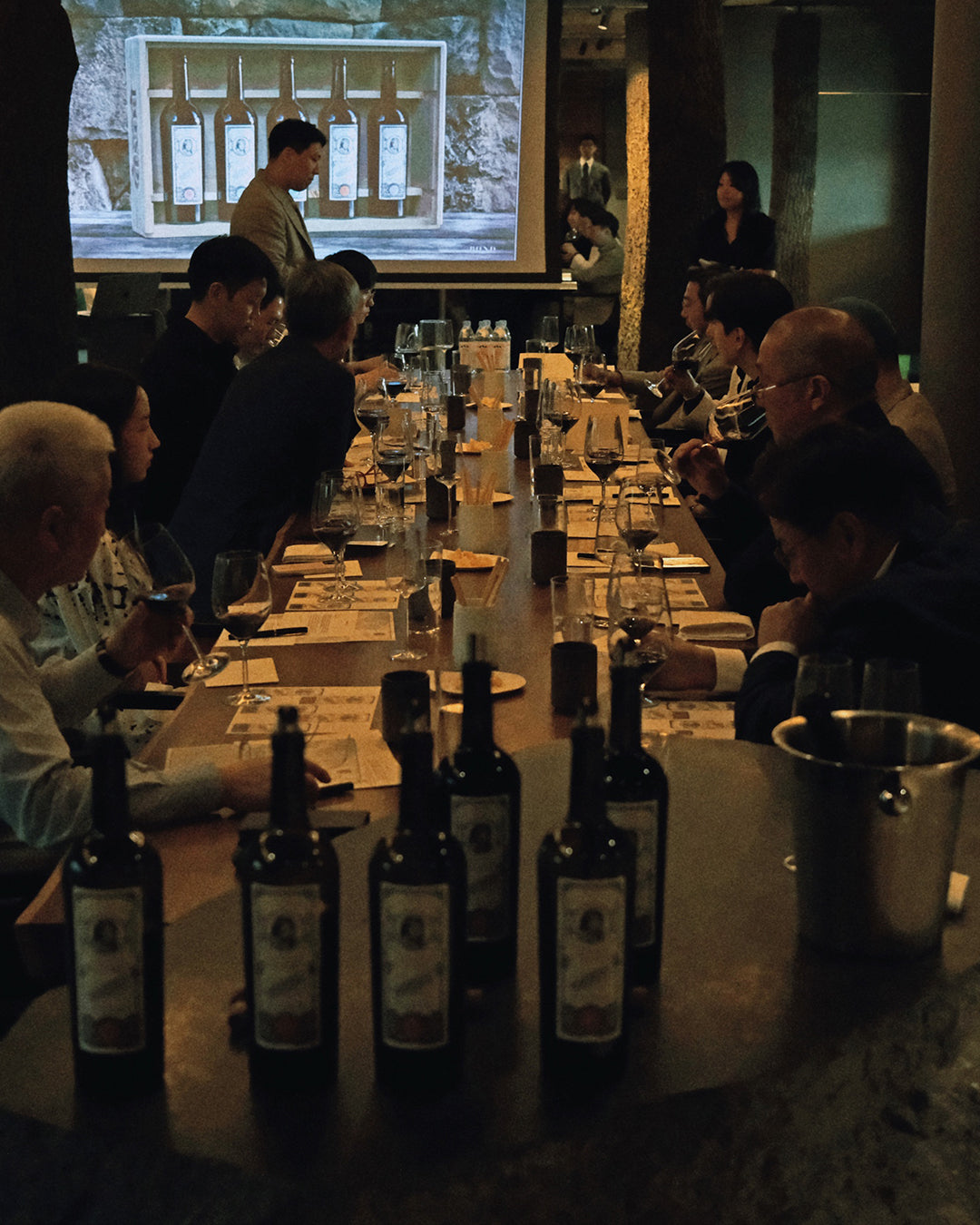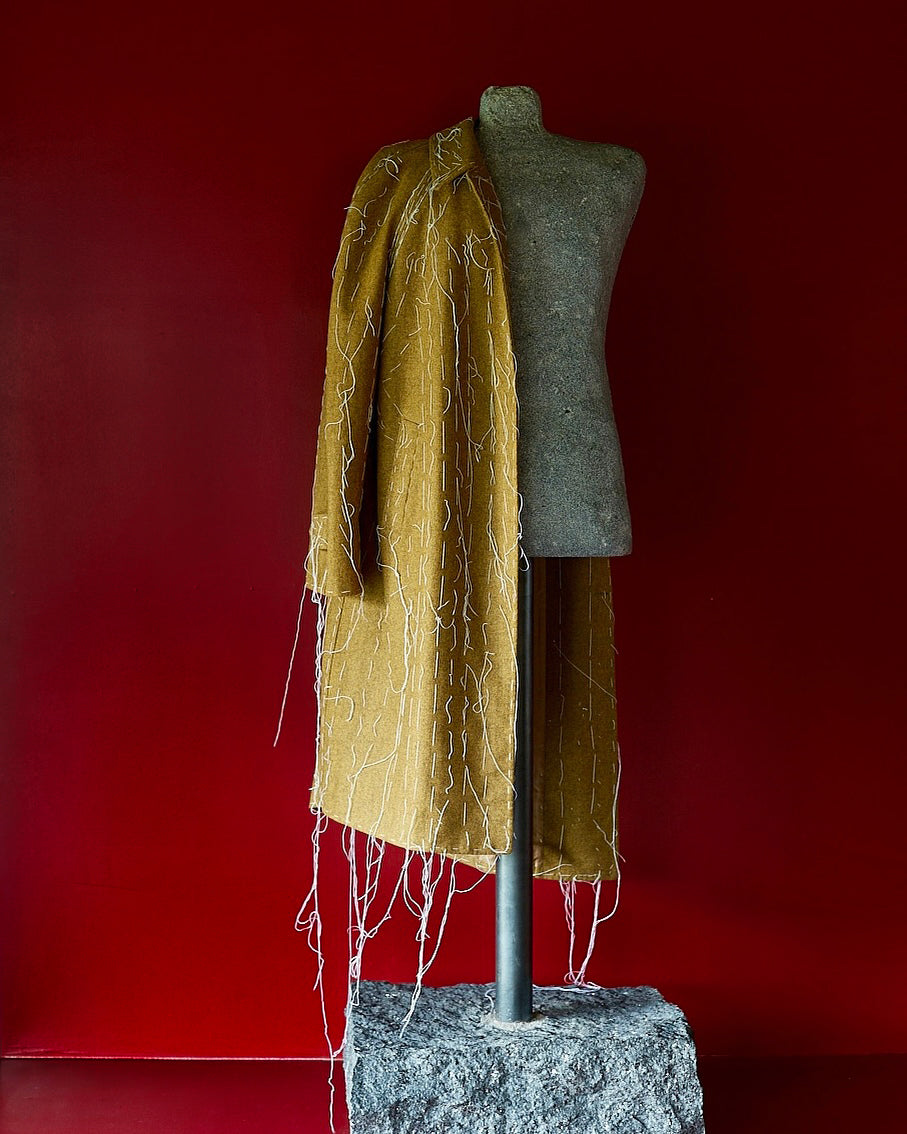“Modern clothing is for people who are full of soul. It is for people with independent and strong personalities. It is for people who have already established their own identity and do not need to try to adorn themselves with bright colors, feathers, or difficult styles.” - Adolf Loos, 『Warum ain mann gut angezogen sein soll』
Kim: How did you feel about this bespoke experience?
Seung: Usually, when I put on new clothes, the first thing that happens is that the clothes and my body fight. The clothes and I have our own inertia, and we creak and bump into each other, but as time goes by, we give in and adjust to each other.
But I was somewhat surprised that from the moment I first put on this piece of clothing, it didn't feel like I was wearing it or not, and there was no 'struggle' at all. Perhaps it was because the conflict had already been resolved in the process of making, or 'building', the clothing. I thought that it was the peace that was created after the fierce battle of the needles moving countless times.
(1)
'True Peace in the World', Joongang Review, 2017 ©
Kim: In your writing, there is a part where you write, "architect and textile have the same etymology, tekton tech ." (1) Now that I think about it, there seem to be many similarities in the act of building clothes/houses for someone. The fact that there is a person at the beginning and the end, the fact that you think about the essence of existence and life that resides in it, and the fact that you become cautious when you realize that the results of your work have an influence inside and out. I wonder what part of this work you particularly sympathized with.
Seung: As you said, I was able to confirm again that clothes are also 'making'. Making refers to the process of setting a concept with some material, imagining the result, and building toward completion. Writing is like that, and so is farming. Needless to say, houses are also made like that, and clothes are also made like that. In particular, I was deeply moved when I saw clothes with knots left during the making process.
Kim: I feel like it’s a similar story that you especially like going on pilgrimages to monasteries. Could we perhaps read Lerici’s quiet and neat clothes from that perspective? If it’s not too much trouble, what kind of architecture or ideology can we compare Lerici’s attitude to?
Seung: If we look at it in terms of the work of construction, Romanesque is the most faithful architectural style to this. The process of constructing space with stone or brick, and the rhythm of light and shadow flowing through the openings that had to be restrained, always amazes me and makes me silent.
Architecture is a matter of embodying the spirit of the times, so I cannot and will not do Romanesque architecture now. However, I always have affection for its essence. It is the same. Monasteries are also facilities related to the exploration and longing for the essence. I get the impression that Lerici is not unrelated to this. Since focusing on the essence is most important, you should not be obsessed with the flow of style. There is a saying that becoming a stylist means you are already dead.

Kim: I use 'atmosphere', which means overall impression or artistic aesthetic, as my key word. After all, clothes are the structures that touch the skin the most, and the observation distance is very close. So, in order to express the whole, I needed a persistent craftsmanship ability to raise the level of perfection of the detailed details. Perhaps, such obsession has become Lerici's character.
I'm curious about you, sir. Could you write down the details you pay the most attention to in your work, or the conceptual representations you ultimately try to achieve?
Seung: It's a bit pointless, but you can divide architects into two categories: intellectuals and artists. The latter are architects who consistently implement their own style regardless of the situation, while the former work in response to the location and function. I try to be an intellectual architect. That's why the architectural solutions are different for each case.
However, there are some things that should never change, and that is what I argued in the aesthetics of poverty. These are the limits I set for the city, space, function, and form. If I had to name a goal that runs through all of this, I would say it is 'the dignity that exists within all of us.' In fact, this is a phrase from the preamble of the UN Declaration of Human Rights.
Kim: Aging is one of the core elements of Lerici craft. It is also the reason why hand sewing is used in all parts. When the warp and weft, which are woven flat, are tightly woven in three dimensions, a certain amount of leeway is left in the tension of each stitch to have the same physical properties as the original fabric, and a structure with a small air layer is formed. This leeway structure makes the clothes look three-dimensional, soft, and allows for long-term aging.
There are probably few fields that require as much attention to aging as architecture. I don’t know much about it, but looking at the distinctive exterior design using rusted iron among the results you participated in, I think you have a special interest in life aging.
Seung: Yes. I build buildings, but I know that time completes architecture. I only build infrastructure for life, and true architecture is created through the life lived there. Architecture is a living organism that is always changing, and the more traces of time remain in architecture, the more impressive it is. The simplicity of my architecture is a space that awaits change. To discuss the similarity between this and minimalism, which aims to be 'eternally unchanging', is the result of a misunderstanding of my architecture.

Kim: In the end, architecture and clothing have something in common in that they are based on the people and lives that live inside them. There are trends and styles that change with the times, but there are also unchanging values. In that context, what is the reason why men still need to dress well?
Win: The Austrian architect Adolf Loos, who had a profound influence on my architecture, wrote an article titled “ Why Men Should Dress Well, ” and one of the passages in it goes like this: “Modern clothing is for people with a soul. It is for people with independent and strong personalities. It is for people who have already established their own identity and do not need to try to dress themselves up in flashy colors, feathers, or difficult styles.” I think this article could be the answer.
seaweed : Lastly, I would like to think more about image and essence. In an era where there are serious questions about originality and reproduction, we all have the task of recovering our subjectivity in life. However, looking at the consumption patterns of modern people, it seems that they consider image as important as essence. In these times, it is not easy to worry about making clothes based on essence. I think you can give me a clear answer.
Win: There is a saying that is two-faced. If the essence and the image are different, this is exactly what it means. An image separated from the essence is weak, and an essence without an image is vague and sometimes empty. Perhaps all of us who have difficulty becoming complete personalities are living two-faced lives. However, these two are sometimes contradictory and sometimes in conflict, but complementing each other and ultimately aligning them is what makes the life given to us all valuable, and by doing so, we will complete ourselves. Although it is truly difficult… .




